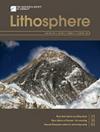Research on the Characteristics of Acoustic Emission Activities of Granite and Marble under Different Loading Methods
IF 1.7
4区 地球科学
Q3 GEOCHEMISTRY & GEOPHYSICS
引用次数: 0
Abstract
At present, there is no corresponding standard for the engineering application of rock acoustic emission technology. To better apply acoustic emission technology to engineering practice, in this paper, the acoustic emission characteristics of different rock samples of marble and granite under uniaxial compression were analyzed by indoor acoustic emission test, the factors affecting the acoustic emission characteristics of rocks are studied, and the failure mechanism and damage characteristics of rock are discussed. The research contents include analyzing the curve fitting relationship between the acoustic emission event rate, the number of events, the stress time, and study of the similarities and differences of acoustic emission characteristics of marble and granite; analysis of damage characteristics of marble and granite based on acoustic emission parameters; by analyzing the relationship between the Felicity ratio of different rocks and the stress level during cyclic loading, the applicability of studying the Kaiser and Felicity effects of rocks; variation of acoustic emission event rate and rock peak intensity under different loading methods and loading rates. The results show that the acoustic emission of marble and granite has experienced the initial compaction zone, the rising zone, the peak zone, and the falling zone, and the two kinds of rocks have different acoustic emission phenomena in different stages, and the duration of each stage is also different; before the instability of the two kinds of rocks, there is a quiet period of acoustic emission, and the higher the rock strength, the longer the duration of this quiet period, which means that the calm period can be used as a precursor feature of rock mass instability for disaster prediction; during the cyclic loading process of rock, the damage development law is divided into three stages: initial stage, stable stage, and instability stage. When the Kaiser effect did not appear for the two rock stresses before 20%, between 20% and 70% of the peak strength, the Kaiser effect is obvious. When the stress exceeds 80% of the peak value, the Kaiser effect fails, and the Felicity effect appears; the variation of the loading rate affects the variation of the acoustic emission event rate, and the increase of the loading rate leads to aggravated rock damage. The theoretical stress-strain curve can reasonably reflect the actual stress-strain characteristics of rock by combining the number of acoustic emission events with the rock damage model. The results are consistent with the acoustic emission test, which verifies the inevitable relationship between acoustic emission and damage to the rock.不同加载方式下花岗岩和大理石的声发射特性研究
目前,对于岩石声发射技术的工程应用还没有相应的标准。为了更好地将声发射技术应用于工程实践,本文通过室内声发射试验,分析了大理岩和花岗岩不同岩样在单轴压缩下的声发射特性,研究了影响岩石声发射特性的因素,探讨了岩石的破坏机制和损伤特征。研究内容包括:分析声发射事件率与事件数、应力时间之间的曲线拟合关系,研究大理岩与花岗岩声发射特征的异同;基于声发射参数的大理岩和花岗岩损伤特征分析通过分析不同岩石的费利西蒂比与循环加载过程中应力水平的关系,论证了研究岩石的凯撒效应和费利西蒂效应的适用性;不同加载方式和加载速率下声发射事件率和岩石峰值强度的变化。结果表明:大理岩和花岗岩的声发射经历了初始压实区、上升区、峰值区和下降区,两种岩石在不同阶段的声发射现象不同,每个阶段的持续时间也不同;两种岩石失稳前均存在声发射安静期,且岩石强度越高,该安静期持续时间越长,这意味着该平静期可作为岩体失稳的前兆特征,用于灾害预测;在岩石循环加载过程中,损伤发展规律可分为初始阶段、稳定阶段和失稳阶段三个阶段。当两种岩石应力在峰值强度的20% ~ 70%之前不出现Kaiser效应时,Kaiser效应明显。当应力超过峰值的80%时,Kaiser效应失效,出现Felicity效应;加载速率的变化影响声发射事件率的变化,加载速率的增大导致岩石损伤加剧。理论应力-应变曲线将声发射事件数与岩石损伤模型相结合,能合理反映岩石的实际应力-应变特征。结果与声发射试验结果一致,验证了声发射与岩石损伤之间的必然关系。
本文章由计算机程序翻译,如有差异,请以英文原文为准。
求助全文
约1分钟内获得全文
求助全文
来源期刊

Lithosphere
GEOCHEMISTRY & GEOPHYSICS-GEOLOGY
CiteScore
3.80
自引率
16.70%
发文量
284
审稿时长
>12 weeks
期刊介绍:
The open access journal will have an expanded scope covering research in all areas of earth, planetary, and environmental sciences, providing a unique publishing choice for authors in the geoscience community.
 求助内容:
求助内容: 应助结果提醒方式:
应助结果提醒方式:


